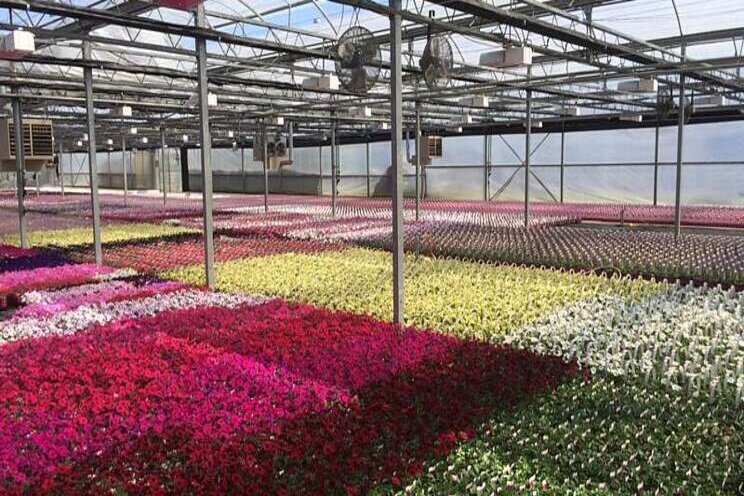"Hidden" benefits of supplemental lighting
Added on 10 April 2021

The DLI refers to the number of photons with wavelengths between 400 and 700 nm incident upon one square meter (m2) per day (d). The number of photons is very high, so we use the unit of moles (mol, which is 6.022 × 1023), and the unit therefore becomes mol×m-2×d-1. A "low" or "high" DLI is subjective and situational, but generally we consider a low DLI for ornamentals is less than 10 mol×m-2×d-1.

Figure 1. High light can increase growth and plant quality, as well as decrease the sensitivity of plants to other environmental parameters.
While the effects of a high DLI on crop growth are quite clear, we have been learning more about the effects of high light on other environmental parameters that regulate plant growth and flowering. In a nutshell, high light can at least partly decrease other environmental responses, including light quality (the photon spectrum), photoperiod (day length), and low temperature. These can be considered "hidden" benefits because the effects are often not obvious.
A high DLI can:
Diminish a low-temperature flowering response. An extended period of low temperatures (such as 35 to 40° F) is required for flowering of some herbaceous perennials, while it improves the flowering response of others. Research at Michigan State University has shown that the promotion of flowering from low temperatures is reduced for some species when grown under a high DLI. More specifically, plants grown under a high DLI often need fewer weeks of low-temperature treatment compared with plants grown under light-limiting conditions. Therefore, when a cold treatment is not delivered for as long as desired, many species will have a stronger flowering response when grown under higher light.
Decrease the photoperiodic flowering response. Flowering of many common annual bedding plants and herbaceous perennials is influenced by photoperiod. Some flower earlier or require short days (long nights) to flower, while a larger number of species have an improved flowering response when the days are long (nights are short). For some long-day plants, the flowering promotion from long days can be decreased when plants are grown under a high DLI. In other words, plants grown under a low DLI may require a relatively long day to flower whereas the same species grown under a high DLI may flower under a shorter photoperiod.
Reduce the effects of light quality. Studies in greenhouses and indoor growing facilities have shown that the effects of the light spectrum are more pronounced when plants are grown under a low DLI than a higher one. For example:
- Supplemental LED lighting that emits blue but not far-red light can inhibit extension growth when the DLI is low, but spectral effects wear off as the solar DLI increases.
- The spectral effects of long-day, photoperiodic lighting also change with DLI. When the DLI is low, day-extension and night-interruption lighting are more effective on some crops when lamps emit both red and far-red light. However when the DLI is high, red light alone can be as effective as red and far-red light combined.
Take-home message. When the solar DLI is low, there are many compelling reasons to install and operate supplemental lighting in greenhouses. Although expensive to install and operate, supplemental lighting typically shortens production time and improves quality parameters such as rooting, stem thickness, compactness, branch number, flower count, and flower size (Figure 1). There can also be "hidden" benefits, such as a decrease in sensitivity to some environmental conditions when grown under high light. Under a high DLI (at least 10 mol×m-2×d-1), plant responses to low temperature, photoperiod and light quality often decrease. This indicates that during the dark and short days of winter, there is greater tolerance to non-optimal conditions when plants are grown with supplemental lighting.
PDF: "Hidden" Benefits of Supplemental Lighting
By Erik Runkle
Source: Greenhouse Product News
Source: Greenhouse Product News
More news















